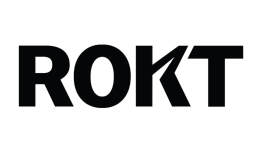Amazon’s Project Kuiper launched low Earth orbit (LEO) satellites into space for the first time in April and June, with the goal of serving consumers, businesses and governments that have trouble getting coverage.
About 2.6 billion people do not have fast broadband internet access, and assuming Amazon grabs a 30% share of the consumer market, the company could generate $7.1 billion by 2032, according to BofA Global Research analysts in a July report shared with PYMNTS.
“Kuiper is a big investment initiative for Amazon that has endured despite ongoing cost-cutting,” wrote BofA analyst Justin Post in the report.
Amazon is planning to offer three tiers of broadband service:
- Ultra-compact satellite antenna that manages speeds of up to 100 megabits per second
- Standard antenna with speeds of up to 400 megabits per second
- Largest model with speeds of up to 1 gigabit per second
“We see a compelling opportunity, and potentially strong long-term margins given high startup costs,” Post wrote, adding that he is projecting Amazon to spend $23 billion building out its satellite service, excluding consumer equipment costs.
The market potential for Amazon exists even if SpaceX’s Starlink satellite service already has 6 million subscribers, Post wrote.
Amazon plans to offer an affordable satellite service by redesigning the satellite itself to lower the costs of deployment.
“Why aren’t rural areas connected? The answer is very simple,” Rajeev Badyal, head of Project Kuiper, said in a video on Project Kuiper’s website. “If it were cost-effective, it would have been done by now. But it isn’t.”
Deploying wired broadband — what most households in cities enjoy through cable lines buried in the ground — is more expensive in large, sparsely populated areas because it requires more physical materials like poles and cables to connect one house. In cities, the cost is spread out because it can connect more homes.
Amazon’s satellite ambitions echo earlier efforts by Google to provide global internet access. Google’s Project Loon, which used stratospheric balloons to beam broadband, was discontinued in 2021 due to difficulty in getting costs low enough to offer a feasible business model.
See also: FCC Opens Digital Commerce Fast Lane With New Satellite Spectrum
Synergies With Amazon’s Other Businesses
Satellite broadband tends to be more expensive, slower and less reliable than wired or mobile broadband. But for many, it is the only option.
In the United States, the Federal Communications Commission said in a report last year that 45 million people cannot get broadband at 100 megabits per second download speeds for fixed and 35 megabits per second 5G for mobile service. According to internet testing company Ookla, the median wired download speed in the U.S. is 289 megabits per second.
Post said Starlink keeps its costs down by using SpaceX, its parent company, to launch into space. The company has nearly 8,000 LEO satellites in space with plans to launch around 42,000 in the future. Like Amazon, Starlink uses low-orbit satellites — those deployed up to 2,000 kilometers above the Earth’s surface.
The FCC approved 3,200 satellites for Amazon to launch and run, Post said. Amazon launches its satellites using rockets from several companies, including its own Blue Origin, SpaceX and United Launch Alliance. To keep costs down since it cannot always use its own rockets to launch, the Amazon team has redesigned its satellites.
Even though satellite broadband has been around for two decades, Post said, low-orbit satellite technology is one that was developed only in recent years. The older satellite systems — geostationary Earth orbit or GEO — are placed about 36,000 kilometers above the planet and typically offer slower speeds. Providers include Hughesnet and Viasat.
Post said he sees Amazon’s Project Kuiper as synergistic as well, enhancing its other businesses in the future.
- Data transfer for AWS clients: Project Kuiper will be able to offer clients private connectivity into AWS without routing data through public internet. In the future, customers will be able to move private data to their own data centers or other public clouds as well.
- AWS for the Internet of Things: Amazon may bundle LEO satellite service with its cloud services to help manage a customer’s Internet of Things and related data. For example, a logistics company could better manage, direct and optimize their delivery assets — which could increasingly become automated — in real time using a satellite network.
- Amazon logistics: Amazon will be able to better manage its own logistics assets with an always-on, connected network. While mobile networks cover most of the U.S., a satellite network could offer better connectivity for on-ground and airborne assets. Amazon could connect to its future robots or drones through Project Kuiper.
Read more:




